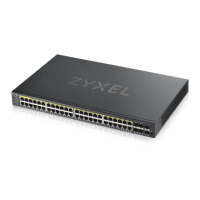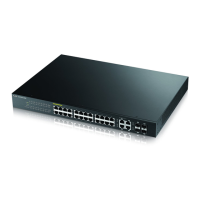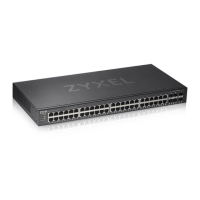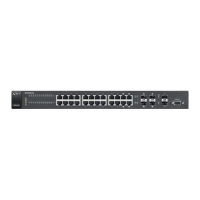Do you have a question about the ZyXEL Communications GS1920-48 and is the answer not in the manual?
| Switch type | Managed |
|---|---|
| Switch layer | L2 |
| Quality of Service (QoS) support | Yes |
| Console port | RJ-45 |
| Power connector | DC-in jack |
| Combo SFP ports quantity | 4 |
| SFP module slots quantity | 2 |
| Basic switching RJ-45 Ethernet ports type | Gigabit Ethernet (10/100/1000) |
| Basic switching RJ-45 Ethernet ports quantity | 44 |
| Networking standards | IEEE 802.1D, IEEE 802.1p, IEEE 802.1Q, IEEE 802.1s, IEEE 802.1w, IEEE 802.1x, IEEE 802.3, IEEE 802.3ab, IEEE 802.3ad, IEEE 802.3af, IEEE 802.3at, IEEE 802.3az, IEEE 802.3u, IEEE 802.3x, IEEE 802.3z |
| DHCP features | DHCP client |
| Security algorithms | SSH, SSL/TLS |
| Throughput | 74 Mpps |
| MAC address table | 16000 entries |
| Safety | LVD, BSMI |
| Stackable | - |
| Certification | FCC Part 15, CE EMC, BSMI ENC, RoHS |
| Product color | Black |
| Mean time between failures (MTBF) | 255580 h |
| AC input voltage | 100 - 240 V |
| AC input frequency | 50 - 60 Hz |
| Power consumption (typical) | 40 W |
| Heat dissipation | 136.4 BTU/h |
| Storage temperature (T-T) | -40 - 70 °C |
| Operating temperature (T-T) | 0 - 50 °C |
| Storage relative humidity (H-H) | 10 - 95 % |
| Operating relative humidity (H-H) | 10 - 90 % |
| Package depth | 293 mm |
| Package width | 512 mm |
| Package height | 98 mm |
| Package weight | 4100 g |
| Depth | 200 mm |
|---|---|
| Width | 440 mm |
| Height | 44.5 mm |
| Weight | 3040 g |












